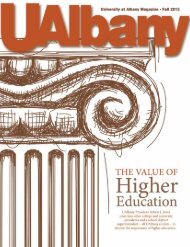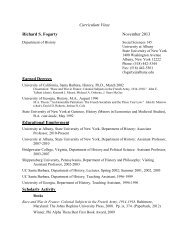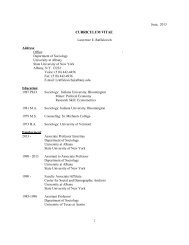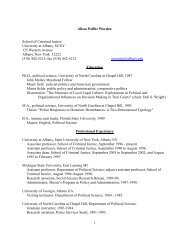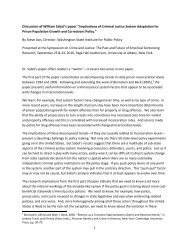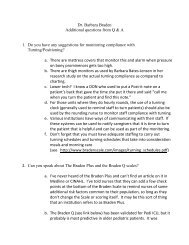Walking Corpses & Conscious Plants: Possibilist Ecologies in ...
Walking Corpses & Conscious Plants: Possibilist Ecologies in ...
Walking Corpses & Conscious Plants: Possibilist Ecologies in ...
You also want an ePaper? Increase the reach of your titles
YUMPU automatically turns print PDFs into web optimized ePapers that Google loves.
B<strong>in</strong>gham 132<br />
consideration for Newton's third law of motion: when a force is exerted upon one body<br />
by another, the second body will simultaneously exert a force of equal magnitude <strong>in</strong> the<br />
opposite direction. A series of violent forces have been exerted upon the Swamp Th<strong>in</strong>g<br />
and now it seems not only fitt<strong>in</strong>g but necessary that he counteract those forces with his<br />
own actions.<br />
Another significant aspect of the beg<strong>in</strong>n<strong>in</strong>g of the conflict cataloged on this page<br />
is that <strong>in</strong>formation is dispersed by Woodrue's imag<strong>in</strong>ative descriptions rather than by<br />
dialogue between the parties <strong>in</strong>volved. In the gutter under panel two, “I am th<strong>in</strong>k<strong>in</strong>g<br />
about the old man,” below panel three, “I am th<strong>in</strong>k<strong>in</strong>g about the crack<strong>in</strong>g of his jo<strong>in</strong>ts as<br />
he runs,” and underneath the f<strong>in</strong>al panel, “I am th<strong>in</strong>k<strong>in</strong>g of the terror <strong>in</strong> his ancient,<br />
atrophied heart” (Saga 31). This ma<strong>in</strong>ta<strong>in</strong>s the <strong>in</strong>tegrity of <strong>in</strong>tensity and chaos for the<br />
two directly <strong>in</strong>volved <strong>in</strong> the moment while also highlight<strong>in</strong>g the importance of reflection<br />
upon acts driven purely by emotion. Also, this approach seems rem<strong>in</strong>iscent of Goya's<br />
work because it <strong>in</strong>corporates thoughts, monsters, rationality, and dreams (Figure 1). In an<br />
<strong>in</strong>terview, Moore expla<strong>in</strong>ed a motivation beh<strong>in</strong>d this method of convey<strong>in</strong>g <strong>in</strong>formation:<br />
A lot of writers use the thought balloons to expla<strong>in</strong> all their characters' pretty<br />
feeble motivations. In the middle of a fight, there's this big slab of metaphysics<br />
above their heads. You don't th<strong>in</strong>k when you're <strong>in</strong> a fight, apart from “AARGH!<br />
BURN! DESTROY!” You certa<strong>in</strong>ly don't start th<strong>in</strong>k<strong>in</strong>g deep and <strong>in</strong>ner thoughts<br />
of Immanuel Kant or anyth<strong>in</strong>g like that. You don't run through a sort of<br />
philosophical tract, especially when someone's try<strong>in</strong>g hard to bend a steel girder<br />
'round your head, believe me. (“Alan Moore & Gary Leach” 1983, p.12)<br />
By us<strong>in</strong>g Woodrue as the narrative voice <strong>in</strong> this situation, Moore is able to focus <strong>in</strong> upon<br />
particular details of a series of tumultuous actions. Though Woodrue's words are not<br />
objective <strong>in</strong> the least and are clearly fueled by his own desires, they provide a place from<br />
which readers can gauge how violence is perceived and even orchestrated by those not



